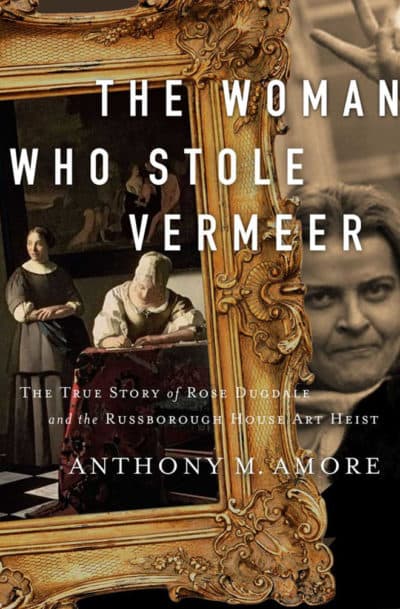Advertisement
'The Woman Who Stole Vermeer' Explores Life Of Legendary Art Thief
Resume
A new book sheds light on one of history's most memorable art heists — and the woman behind it.
"The Woman Who Stole Vermeer" explores the life of Rose Dugdale — an aristocrat-turned-revolutionary. She became the first and only woman to pull off a major art heist.
WBUR's Morning Edition spoke with Anthony Amore, the book's author and director of security and chief investigator at the Isabella Stewart Gardner Museum about the infamous art thief and Amore's quest to recover the items stolen in the Boston's museum's own unsolved heist.
Here are the interview highlights, lightly edited for clarity.
Interview Highlights
On Dugdale's origins
She grew up in an idyllic setting. She was a debutante, part of the last debutante class before the queen went on to Oxford, went to Mount Holyoke and enjoyed the United States.

In 1968, she had a transformative experience when she went to Cuba at the invitation of Fidel Castro. And when she came back to the United Kingdom, she instantly — and I mean within weeks — masterminded an aerial bombing assault on a constabulary. This really heightened her profile, even though she had already become an international name for an art theft she did at her parents' home a few years earlier.
Her family had been away for a weekend, and she and her boyfriend, who had been supported by her rich parents to this date, had spent all their money. And they turned to the source they always went to for money: they robbed the parents' estate of paintings and silver. They weren't great criminals. The police were instantly turned on to them because they left all sorts of evidence that it was them, including the fact that the only valuable that wasn't stolen was a precious gift Rose had given her mother and the only room that was untouched was Rose's bedroom.
That was a turning point in her life, too, because her boyfriend was jailed and in an epic misjudgment that the judge who handed down her sentence found her guilty, but gave her a suspended sentence. He let her free, saying she was unlikely to ever commit a crime again, which as history showed was a really poor evaluation of what was to come for Ms. Dugdale.
On Dugdale's famous heist at Russborough House
Rose masterminded this crime, and her intent was to get these paintings and then try to ransom them in return for the movement of the Price Sisters — the first females in the IRA to pull off a bombing in Great Britain — from a prison in England to a jail in Northern Ireland. So her goal was political, which makes her unique. And the key is only Rose among the four thieves that were in the house would know which paintings to take. The ability to pick out a Vermeer when there are only 36 known Vermeers point to a refined upbringing that Rose Dugdale had.
A Vermeer was stolen six weeks earlier in London, and the M.O. was similar to the ransom letters for the Russborough House. That theft was nearly identical to the ones Rose wrote. I make a case in the epilogue of the book — an investigator's case, circumstantial though it may be, that Rose was likely the thief of a prior Vermeer, which is just a staggering fact.
On Dugdale's arrest and prison sentence
The six years in prison could launch a book on their own. And the story of how her boyfriend and the father of her child tried to free her from prison is a well-known tale in Ireland. In fact, some people in Ireland only know Rose for that story. So it just shows that from the beginning of her life to the end of her criminal career is just a remarkable journey. And it leaves the reader with the true question about whether a person is a terrorist or a freedom fighter.
On how Dugdale's story ties to the stolen Gardner Museum art
In a way, it does give me hope. Masterpieces, these highly recognizable sorts of works, are just like the paintings that were stolen from the Gardner there. Those types of paintings have a much higher recovery rate than others.
Secondly, it fits into a trend, and that trend is art that is stolen of this caliber is either recovered right away, as in the Dugdale case, or generation or so after, as I believe it will be in the Gardner case. So these are the types of things that we use to motivate us, myself and the FBI in our continued hunt for the Gardner art.
This segment aired on February 5, 2021.
